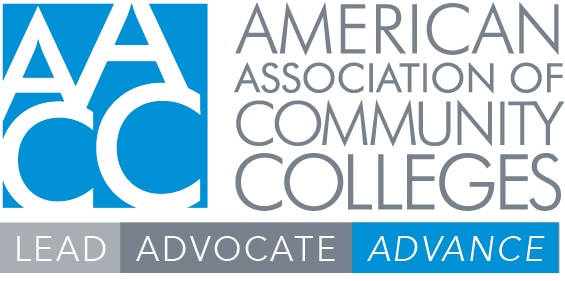The House Subcommittee on Labor, Health and Human Services and Education (LHHS-ED) on Friday approved a funding bill that would make deep cuts and program eliminations to many key education and job training programs.

However, future consideration of the bill is uncertain, reflected by full House Appropriations Committee action reportedly scheduled for next week, an unusually long time between subcommittee and full committee markups. When, or even if, the full House will vote on the bill is also unclear, as potentially enough moderate Republicans would vote against the bill (along with all the Democrats) to prevent it from passing.
The reductions made to education and workforce funding in the bill are not to be taken lightly, and community college leaders should let members of Congress know the devastating impact they would have if enacted. However, final fiscal year (FY) 2024 funding legislation, which will likely be enacted towards the end of the year, will surely look a lot different than the House bill, because it has no chance of being passed by the Senate.
This dynamic is similar – though reversed – to recent years, when the Democratic-controlled House passed appropriations bills with far higher funding levels than were destined to be included in final legislation.
Between the lines
In the House bill, higher education programs generally would fare better than K-12 programs but far from unscathed. The bill text does not indicate funding levels for every program, so we don’t know all the details yet. Those won’t emerge until shortly before the full committee markup. But inferences we can make from what is in the bill text, along with other details that the House Democrats included in their bill summary, paint most of the picture.
The Pell Grant program would get the same amount of funding that it has for the last several years, but the maximum award would freeze at $7,395. However, Federal Work-Study and the Supplemental Educational Opportunity Grants would be eliminated. Surprisingly, the bill does not rescind any money from the “Pell surplus” to help fund other programs, a fact the House Republicans touted in their bill summary.
Funding for other key Education Department programs would remain flat or face cuts. The bill would level fund Perkins Career and Technical Education and Adult Education programs, but substantially reduce spending on higher education programs, including HEA Title III and V programs.
While we do not yet have program-by-program numbers for these programs, the House Democrats indicated in their bill summary that the Childcare Access Means Parents in School program would be eliminated. This is a vital program for community colleges and their students, and a top priority of the American Association of Community Colleges (AACC).
Interestingly, the bill contains $10 million in supplemental funding for community college HBCUs (historically Black colleges and universities). Many of those institutions are in Alabama, the home state of Robert Aderholt, who chairs the LHHS-ED appropriations subcommittee.
On the Labor side
On the U.S. Labor Department side of the spending bill, there’s a major bright spot for community colleges: the Strengthening Community Colleges Training Grants (SCCTG) program would stay at its FY23 funding level of $65 million. AACC was concerned that this program would be eliminated from the bill entirely and consequently focused much of its appropriations advocacy on this program. Its inclusion in the bill was very welcome and greatly strengthens its position in the coming House-Senate negotiations.
Workforce Innovation and Opportunity Act (WIOA) programs were cut overall, mostly via the elimination of the youth funding stream and a substantial reduction in the adult training program. The apprenticeship program was held steady at $285 million but would no longer be limited to registered apprenticeships, a top Republican priority.
In addition to funding provisions, the bill contains many “policy riders” that are largely aimed at preventing the Biden administration from implementing its priorities, including student loan debt relief and a final Title IX regulation. These, too, are unlikely to be included in final legislation.
What got us here and what lies ahead
Progress on appropriations legislation was stymied during the first half of the year as Congress and the Biden administration squared off over how to deal with the debt ceiling. The legislation that was eventually brokered and passed, the Fiscal Responsibility Act (FRA), set a discretionary funding cap of $1.59 trillion in FY24, which is about a 1% decrease from last year. However, that cap includes an increase in defense spending, so the cap for domestic programs would be lower than the amount spent in FY 23. But side agreements to repurpose some previously appropriated funds that were clawed back in the FRA raise funding for non-defense programs to just below last year’s level.
Soon after the debt ceiling bill passed, House Appropriations Committee Chair Kay Granger announced that the House would consider appropriations bills that fund domestic programs well below these caps. This was widely seen as a move to assuage the most conservative House members, who did not feel that the debt ceiling bill went far enough to reduce spending.
Furthermore, the House bills adhere to these caps in part by making $115 billion in cuts to prior appropriations that Senate Democrats will never agree to. After all these moves, the bottom line for the House LHHS-ED bill was an allocation that was about 30% less than last year, a huge cut.
In contrast, the Senate Appropriations Committee is working in a bipartisan manner on bills that will adhere to the funding levels set out in the FRA (which as noted above, are themselves pretty restrictive). Those bills have not yet been released. This will lead to tough negotiations between the two chambers later in the year. But the likeliest outcome is legislation that funds programs at the topline levels set out in the FRA.





